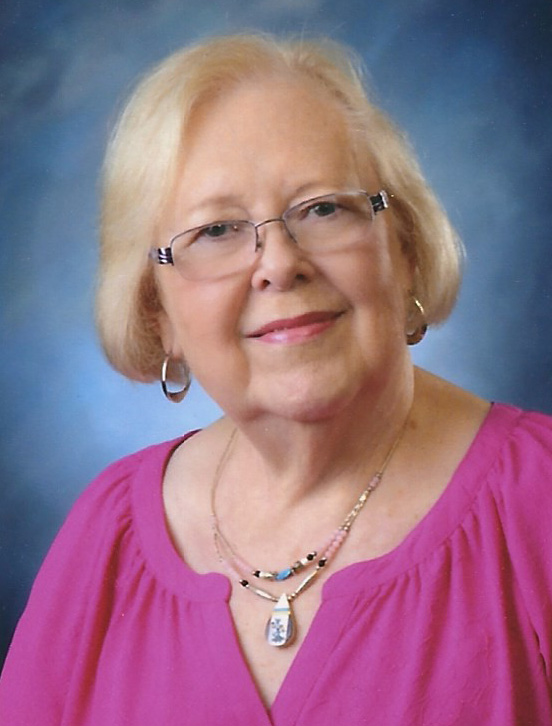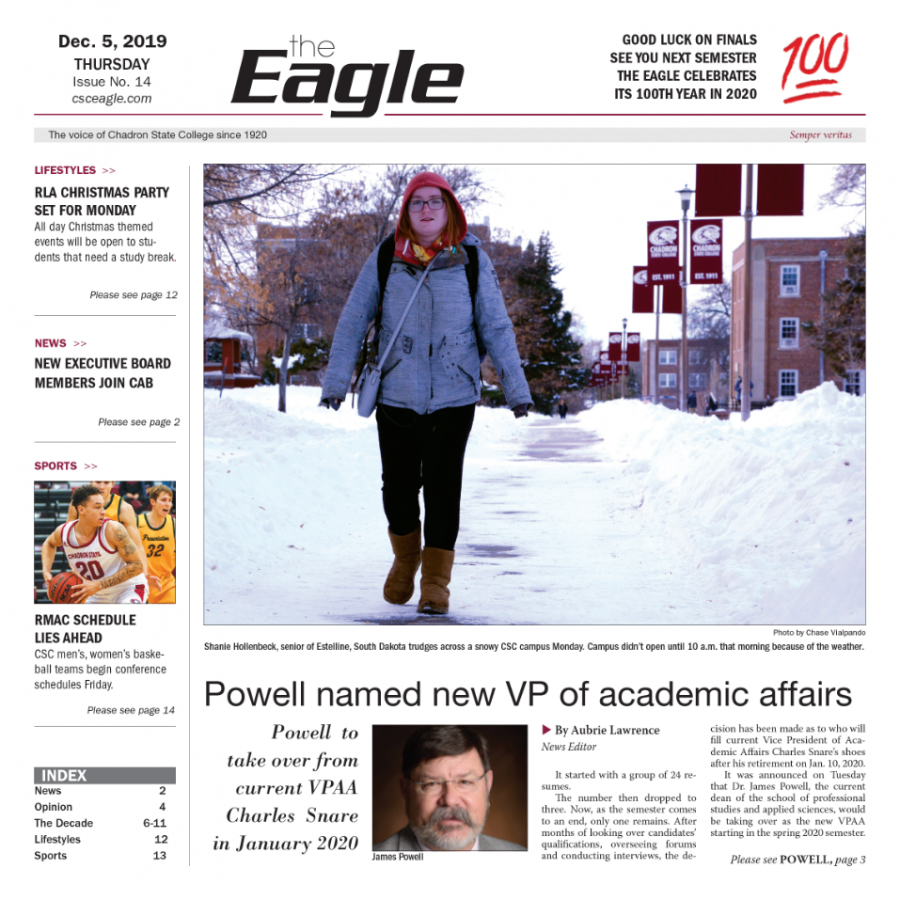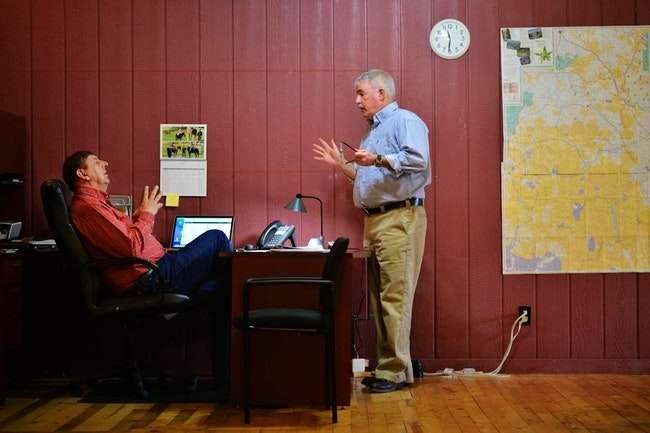Southwestern College Sun is one of the top college journalism programs in country
Nov 1, 2019
By Teri Saylor
Special to Publishers’ Auxiliary
When the Southwestern College Sun in Chula Vista, California, won a first-place award for general excellence in NNA’s 2018 Better Newspapers Contest, the judge noted that this newspaper “punches well above its weight, with especially strong writing, photography and artwork.”
This General Excellence honor is just one of hundreds of awards that The Sun has captured in its 55-year history. Last March, the newspaper was inducted in the Associated Collegiate Press Hall of Fame. The Sun’s adviser and journalism professor, Max Branscomb, was with his staff when they accepted the award at ACP’s Midwinter National College Journalism Convention in La Jolla. They also won a Best in Show award that night.
“Induction into the ACP Hall of Fame is like standing on top of the mountain,” said Branscomb in a news release. “It speaks to the talent and dedication of the students in our community. It is proof that Southwestern College students have done brilliant work on par with the elite national journalism programs in the Hall of Fame.”
According to Branscomb, professionalism is the essential component of The Sun’s success.
“The Sun is an independent newspaper. The students totally run it, and they do a great job,” he said in a recent phone interview.
The newspaper welcomes any and all students who want to write and cover issues that are important to the campus community and the community at large.
Southwestern College is a two-year community college in Chula Vista, California. It was founded in 1961 and serves about 19,000 students. A border community, both the college and the newspaper serve a diverse population. The staff reflects that diversity.
“We are proud and honored to be six miles from Mexico, and I wouldn’t be surprised if we have the most diverse university newspaper in the country,” Branscomb said. The students are white, black, Latino and Asian. Students list their homes in places like Guam, Mexico, and the Philippines.
“Even if students who don’t speak English want to work for us, we uncover their skills and find a job for them,” he said. “We know everyone has skills and talents.”
The newspaper does recruit for specialty positions like editors, graphic designers and photographers. The staff self-selects its editor-in-chief, and if more than one student journalist is in the running for that position, Branscomb brings in professional journalists who interview the candidates and make a recommendation.
In most cases, the student journalists choose the job they want and work their way into it.
“It is a healthy system,” Branscomb said.
The Sun’s current editor-in-chief found her way to the newspaper the same way most of the staff land there. A native of Guam, Brittany Cruz-Fejeran moved to Chula Vista, where her birth-father lives, to get a good education. She lived there for a year to establish residency and enrolled in the college before she figured out a career path.
“I love photography, but I didn’t know how to start a career,” she said.
One of her first courses was in mass communication. Branscomb was her professor, and he invited her to join the newspaper’s staff. She started as a writer and photographer and became photo editor before rising to editor-in-chief. Along the way, she has worn a variety of hats as a copy editor, page designer and has even drawn an editorial cartoon.
A self-described shy and timid teen, her role has transformed her into a leader.
“I see my fellow reporters as warriors and recognize our purpose here is to keep authority in check,” she said. “If my friends back home could see me now, they wouldn’t recognize me.”
The past year was not an easy one for the student journalists.
Last year, Branscomb was diagnosed with mouth cancer, which required extensive surgery, chemotherapy and radiation. He has recovered, resumed his duties, and is now cancer-free.
Branscomb’s absence created a growth experience for former editor-in-chief Katy Stegall.
“I had worked on the paper before being named editor-in-chief and worked closely with him. He is very inspiring, and he taught me to love journalism,” she said. “It was terrifying knowing he wouldn’t be here during my year as editor-in-chief.”
During his absence, David Washburn, a former print journalist who is now in news and investigations at KPBS of Greater San Diego, filled in as The Sun’s adviser. Stegall called him “incredible” and said she is glad he served as interim adviser.
Like Cruz-Fejeran, Stegall discovered journalism by accident. She joined a writing-for-publications class that Branscomb taught, found her way to The Sun’s staff and quickly discovered investigative reporting.
As a student journalist interning with the Voice of San Diego, she learned about a Southwestern College professor who had been engaged in affairs with students for years. The college allowed the professor to quietly resign, and he later began teaching at San Diego State University. To get the story, The Sun filed numerous public records requests for documents generated by a college investigation, with no results. The college finally released the records after The Voice hired an attorney to help.
“I love investigative journalism and I can’t see myself doing anything else,” Stegall said. Now working an internship with the San Diego Union Tribune, she hopes to land a job covering local and state politics. She still has a semester to go at Southwestern because she cut back to part-time status to accommodate her newspaper work.
The Sun is editorially independent, but Southwestern Community College maintains a line item in its budget to print the non-daily newspaper. Donations help fund student travel to professional conferences and journalism awards programs. There are no ad sales. The circulation is roughly 5,000.
“We gave up on trying to sell ads,” Branscomb said. “Its difficult to sell ads, and the kids don’t want to do it. We tried using consultants, business students and marketing students, and nothing worked.”
Stegall think the mainstream media do not do a good job of holding politicians in check, and she believes young journalists have a huge responsibility to dig for the truth.
“I think newspapers and the media in general are too concerned with reporting down the middle. They ignore the truth, and it’s important to call it as it is,” she said. “If the truth is not in the story, then readers can’t see it.”
Through teaching his students in class and mentoring them at The Sun, Branscomb has faith in journalism’s future. He can see young reporters continuing to cover government, holding elected officials accountable and making sure individuals are treated fairly. He believes journalists will perform these tasks well on any platform, as long as they are able to write well, if they are good storytellers and if they maintain high ethical standards.
“We are going through a radical period of readjustment, but these kids are optimistic and skilled in social media, digital media and mobile platforms,” Branscomb said. “Technology will just invite more diversity into the mix. Whether people have disabilities, whether they live in remote locations, technology empowers them to become journalists, and that is a great thing.”
While Stegall acknowledges the power of digital journalism, she still values print and believes her fellow students do, too. Last spring before heading off to The Sun’s Hall of Fame induction and to accept the Best of Show award, Stegall and Cruz-Fejeran stayed up all night to get the newspaper out. She described cutting the binding string on a stack of papers and admired the first issue the two worked on together.
“We talked about how great the paper looked, how our staff had won Best in Show and how much work we had put into it,” she said. “I realized that leaders are not made at 3:00 in the afternoon, but at 3:00 in the morning.”
Teri Saylor is a freelance writer in Raleigh, North Carolina. Contact her at 919-604-0288.










